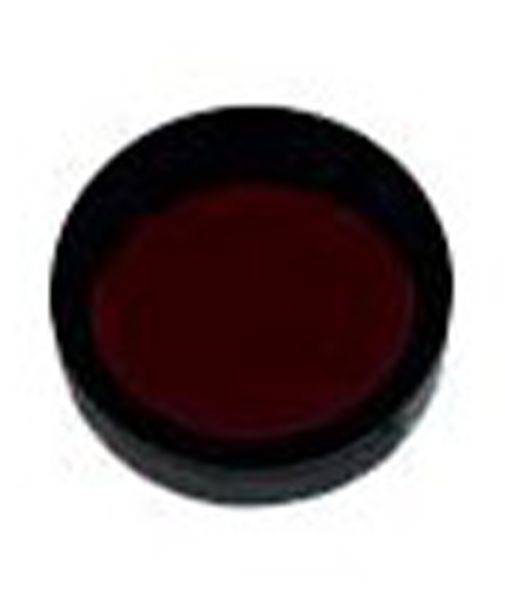Astrodon H-Alpha 5 nm mounted filter 1.25" / 31.8 mm
Astrodon H-Alpha 5 nm mounted filter 1.25" / 31.8 mm
The picture with band filters stetta, specifically the H-Alfa, has become very popular. The H-Alpha is the ideal tool to be able to observe the structures of emission nebulae because it provides a high contrast and you can take pictures even in the presence of the Moon or light pollution.
The H-Alpha filter Astrodon has become the preferred choice by Astrophotographers for the following important reasons:
- it is perfectly parafocality than all filters Astrodon LRGB, C, OIII and SII eliminating the need for adjustment of fire.
All filters are parfocal Astrodon:
most frustration with nell'astrofotografia CCD is that of having to find the correct firing position with the H-alpha filter: the narrow band filters keep out much light so you must use a very bright star to perfect focus. All filters Astrodon Trudi Balance L, C, R, G, B, H-Alfa, OIII and SII are parfocal on optics with focal ratio less than f / 4.
This means you can adjust the focus by using a filter C or G, mount the filter H-Alpha and immediately proceed with the acquisition. This is one of the key advantages of the Tru-Balance filters Astrodon that made them so popular in a short time.
The thickness of the filter determines how it can be parafocality: Tru-Balance filters are dichroic filters with very resistant treatments deposited on a single glass substrate of high quality. The reduced thickness (3mm) of this substrate is controlled accurately with error +/- 0.05mm. The change from lot to lot is less than 0.1mm, measuring slightly less than the critical areas of focus of a system f / 5. On request it is possible to select within various batches filters with less variation and then get a set of filters that have the exact same thickness (prices on request). - the incredible light transmission of 90-92 % in the H-alpha emission line reduces the total exposure of the image
- bandwidth reduced to 5nm is the right compromise to get a signal rich in detail (much more mixed than a 13NM)
- a single substrate allows to eliminate internal reflections that cause halos around bright stars as is the case for most of the other H-alpha filters
- efficient block of the wavelengths that fall outside the passband of H-alpha (transmission of less than 0.0004%) to achieve a high S / N ratio and high contrast, even with the Moon in the vicinity
< br /> The image above shows the remnant of a supernova in the Vela and was obtained with a sensor on KAI11000 Takahashi FSQ106 and H-Alpha filter Astrodon. Image is of John Gleason. All rights reserved.
The value FWHM (width of the bandwidth at half maximum of the transmission curve) is 5nm. In the construction of dichroic filters, narrow band, you are reached often a compromise between a value of FWHM very low (sharp bend) and a transmission peak as high as possible. For this the filter Custom Scientific H-alpha 3.5nm has a peak transmission of 72% while the Astronomik 13NM has a transmission peak near the 95%. The Astrodon 6nm, despite having so a sharp turn, currently reaches a peak transmission of 90-92%, which is quite remarkable. For example a Astronomik 6nm not get on average 84%.
The bandwidth of dichroic filters narrow band moves to lower wavelengths with optical short focal ratio. A filter H-alpha very narrow band designed for a perspective f / 10 may not provide much signal when used with a view f / 3.3 given that the bandwidth of the filter may have shifted under the length of emission dell'H- Alfa of 656.3nm. Astrodon 5nm filter has a bandwidth wide enough to support change optical configuration as described above without transmission loss.
Recently, the Custom Scientific has offered the market a filter H-Alfa 4.5nm that overcomes the problems of the previous model . The figure below shows two shots of the Crescent Nebula (NGC6888) obtained with a filter Astrodon H-Alpha 6nm (right) and with a filter Custom Scientific H-Alfa 4.5nm (left). The images were taken the same night in sequence, with the same instruments and consist of 6 exhibitions 5 minutes each then processed in the same manner with Maxim DL. You may notice the greatest contrast provided by the filter Astrodon right. The rectangle is drawn in the same region to use the Maxim DL: The table shows the highest value of the mean and standard deviation of the signal, resulting in greater contrast filter Astrodon.H-FILTER ALFA MEDIA ADU SD Astrodon 5nm 16279 5919 CUSTOM SCIENTIFIC 4.5nm 13114 5265 < / table> Many astrophotography using the filters H-Alpha, SII and OIII to obtain images similar to the Hubble. The photo shows an example of what can be achieved by shooting a region of the nebula North America with a Takahashi FSQ106N and a CCD sensor KAF3200.
The green represents hydrogen from the band H-Alfa, the red sulfur the band of the SII and the blue oxygen from the band dell'OIII. You can see that the narrow-band filters add many details to the structure of the emission nebula. "
| Product Status | New |
|---|---|
| Package width | 5 cm |
| Package height | 1 cm |
| Package depth | 5 cm |





